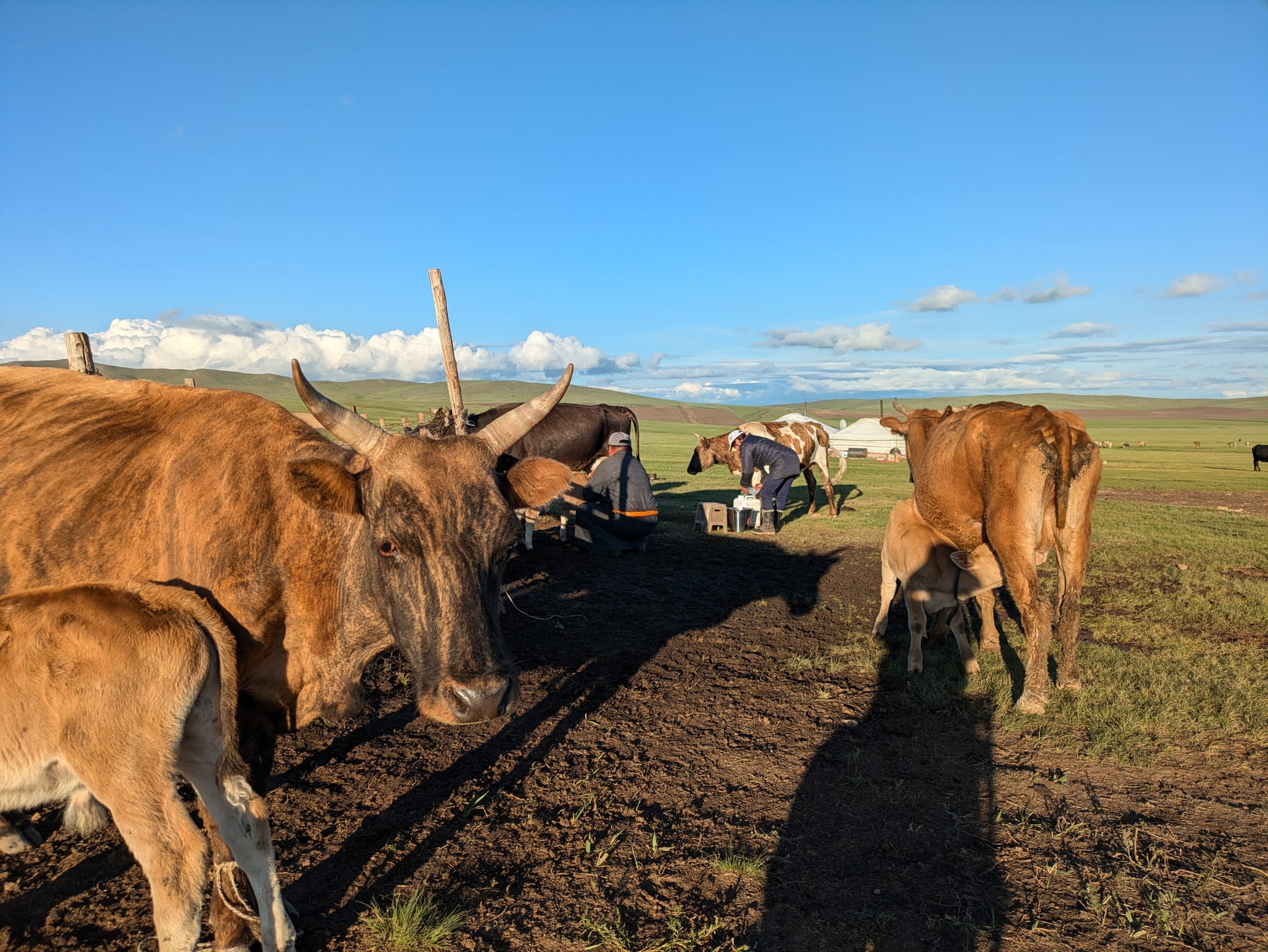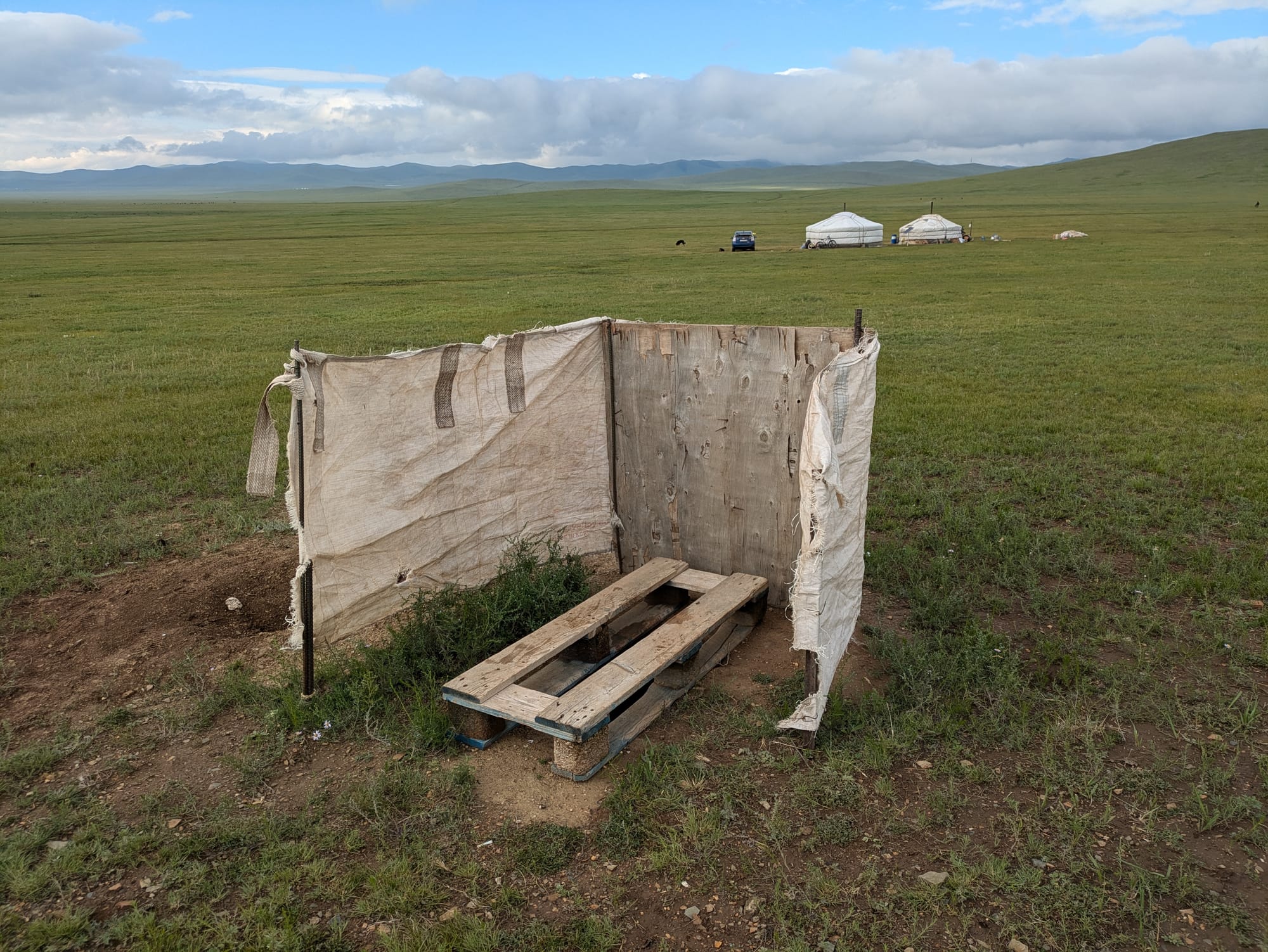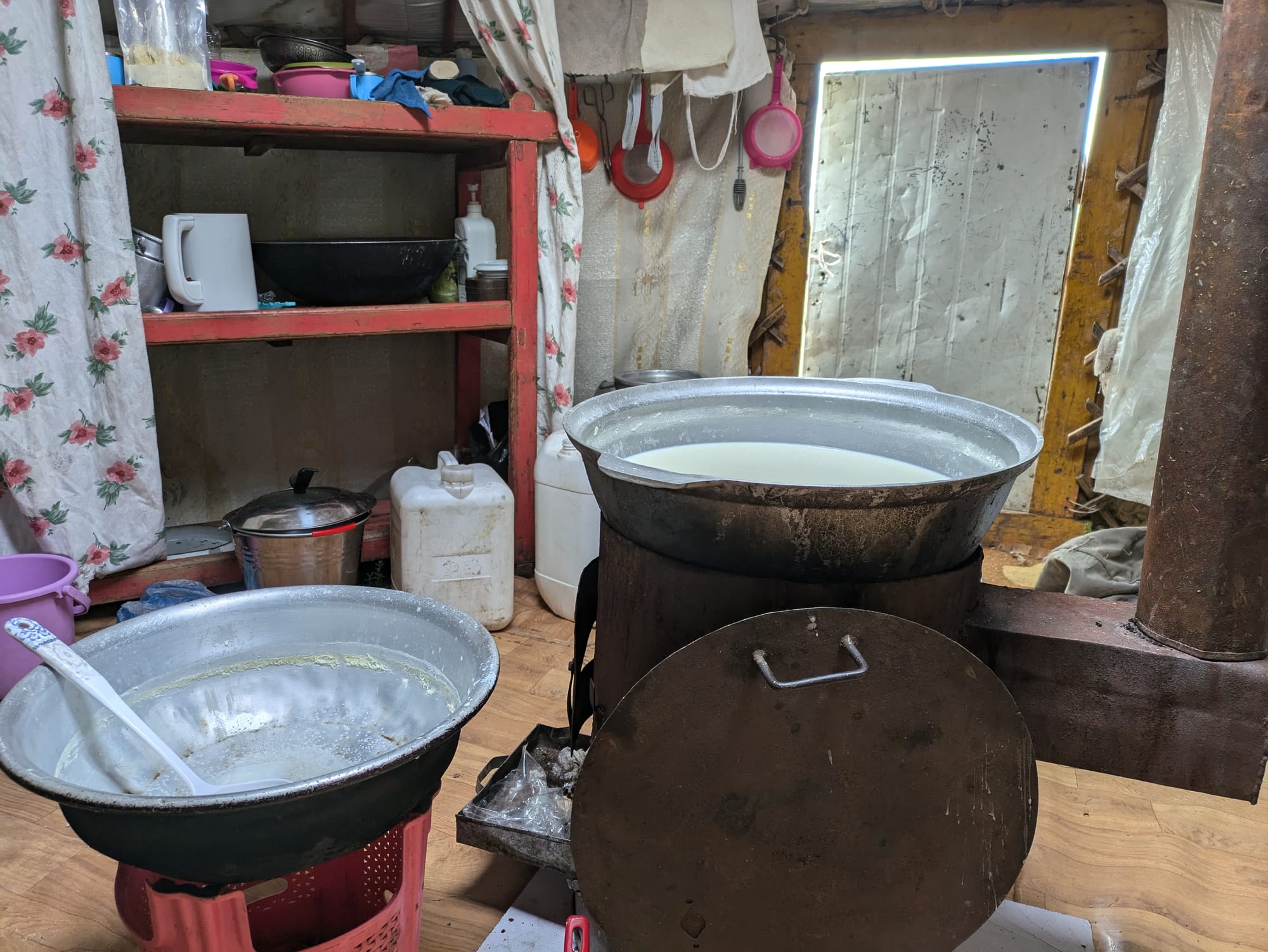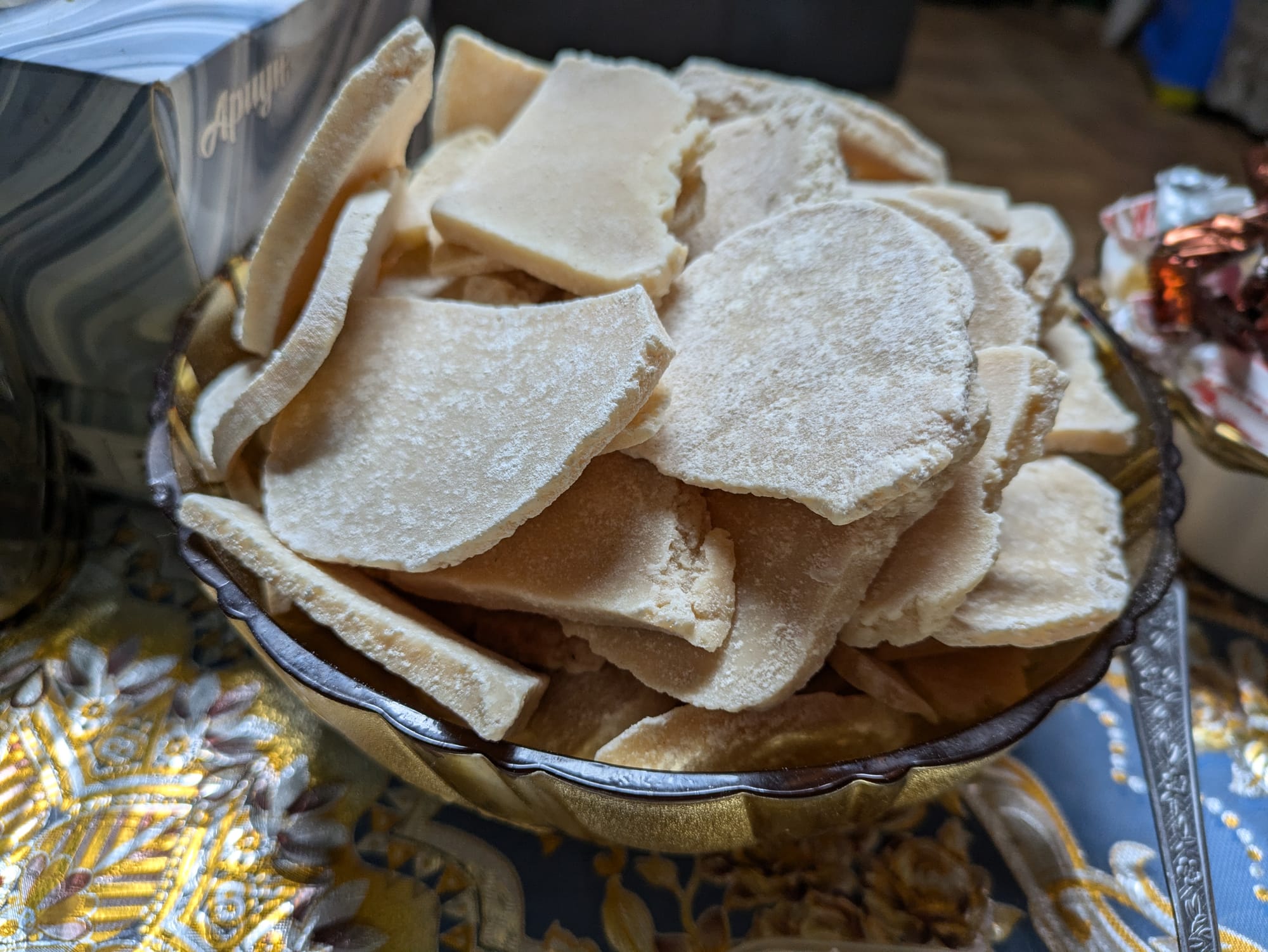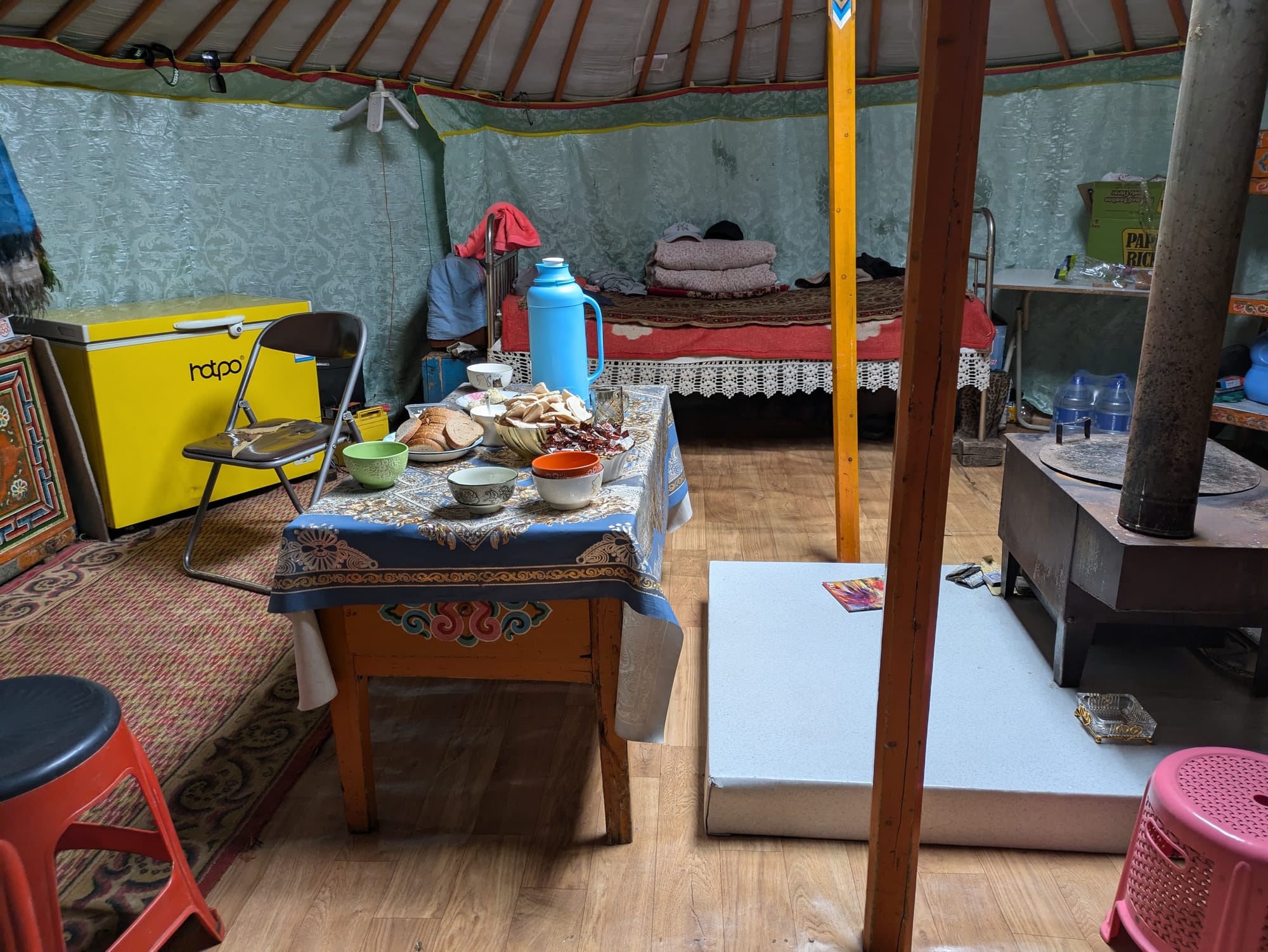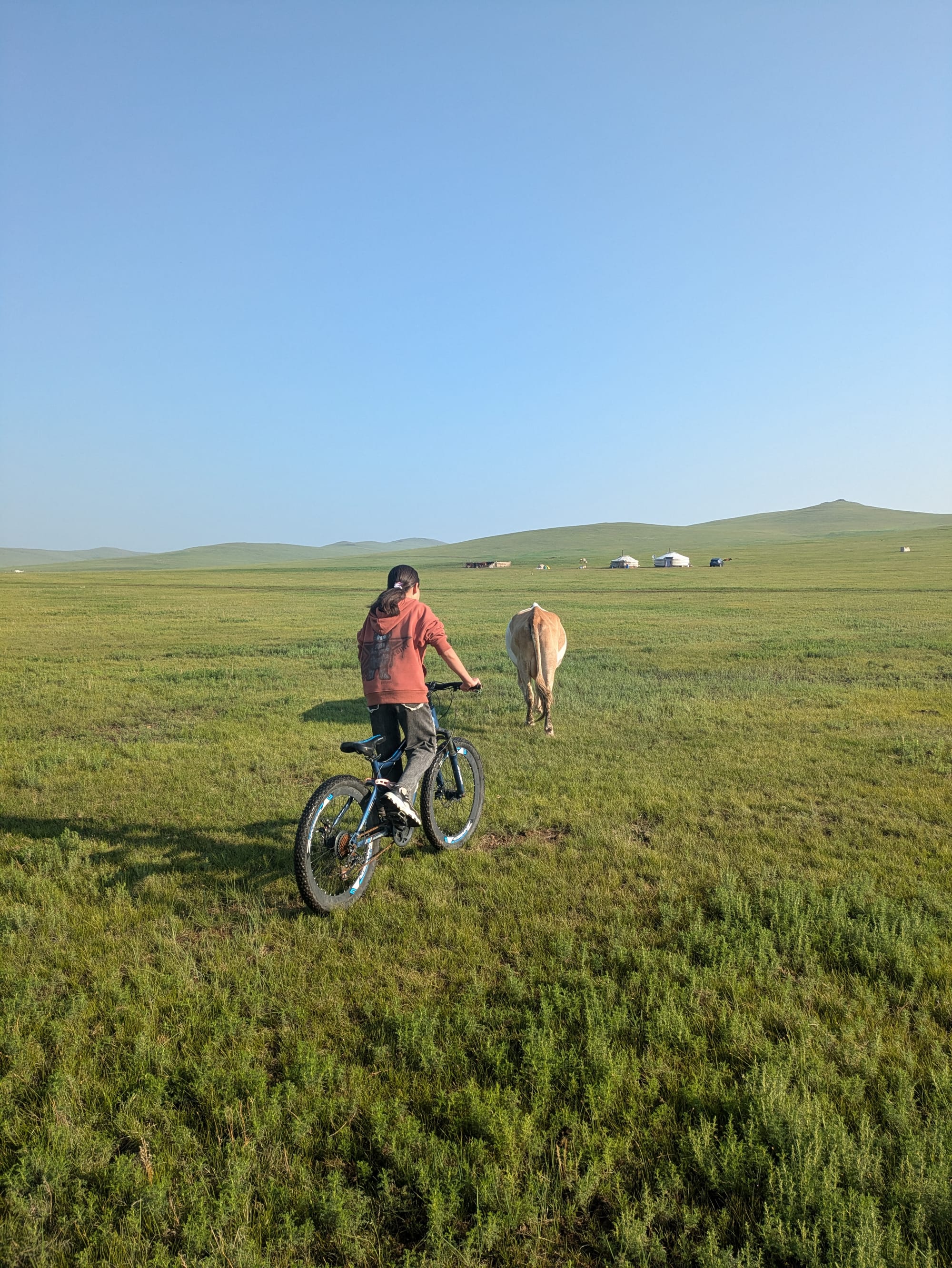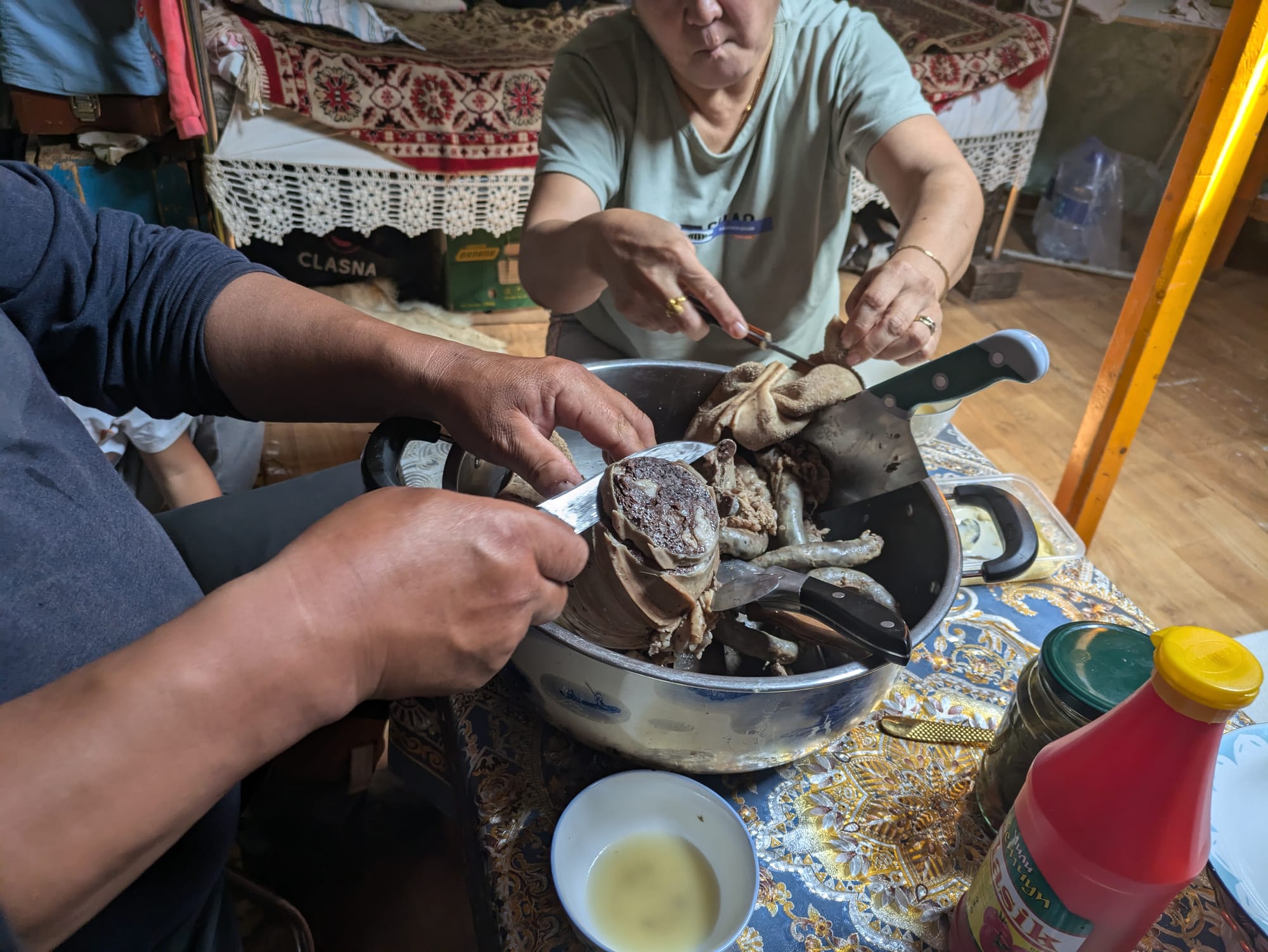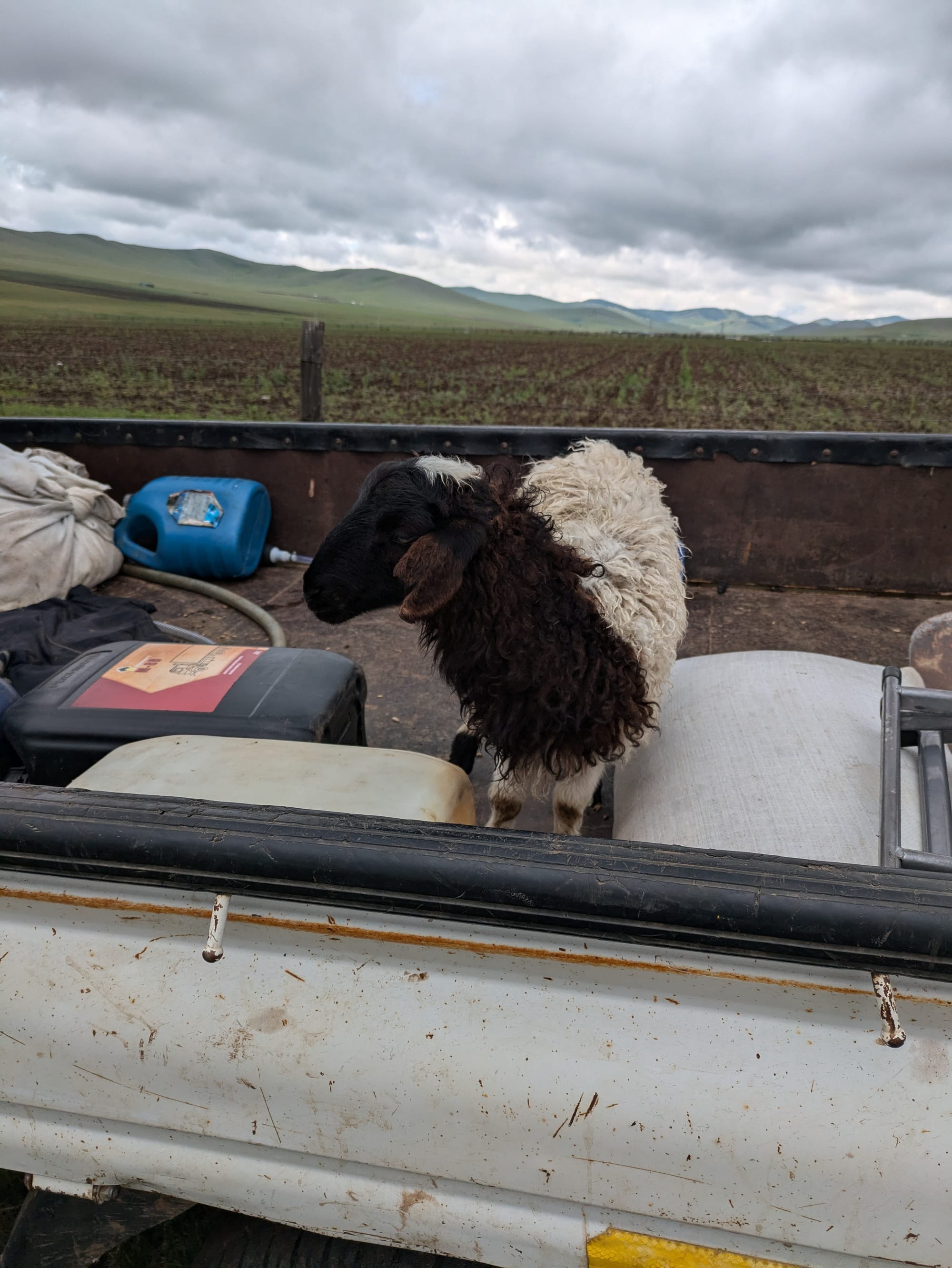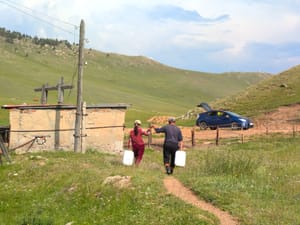See Japanese below/ 日本語は下にあります。
Experiencing Nomadic Life in Mongolia: A Journey to Remember
In late June 2024, I spent time with a nomadic family in Mongolia. Here, I’d like to share what a day in the life of a Mongolian nomad is like and recount some of my personal experiences.
Starting the Day: Milk Tea and Breakfast
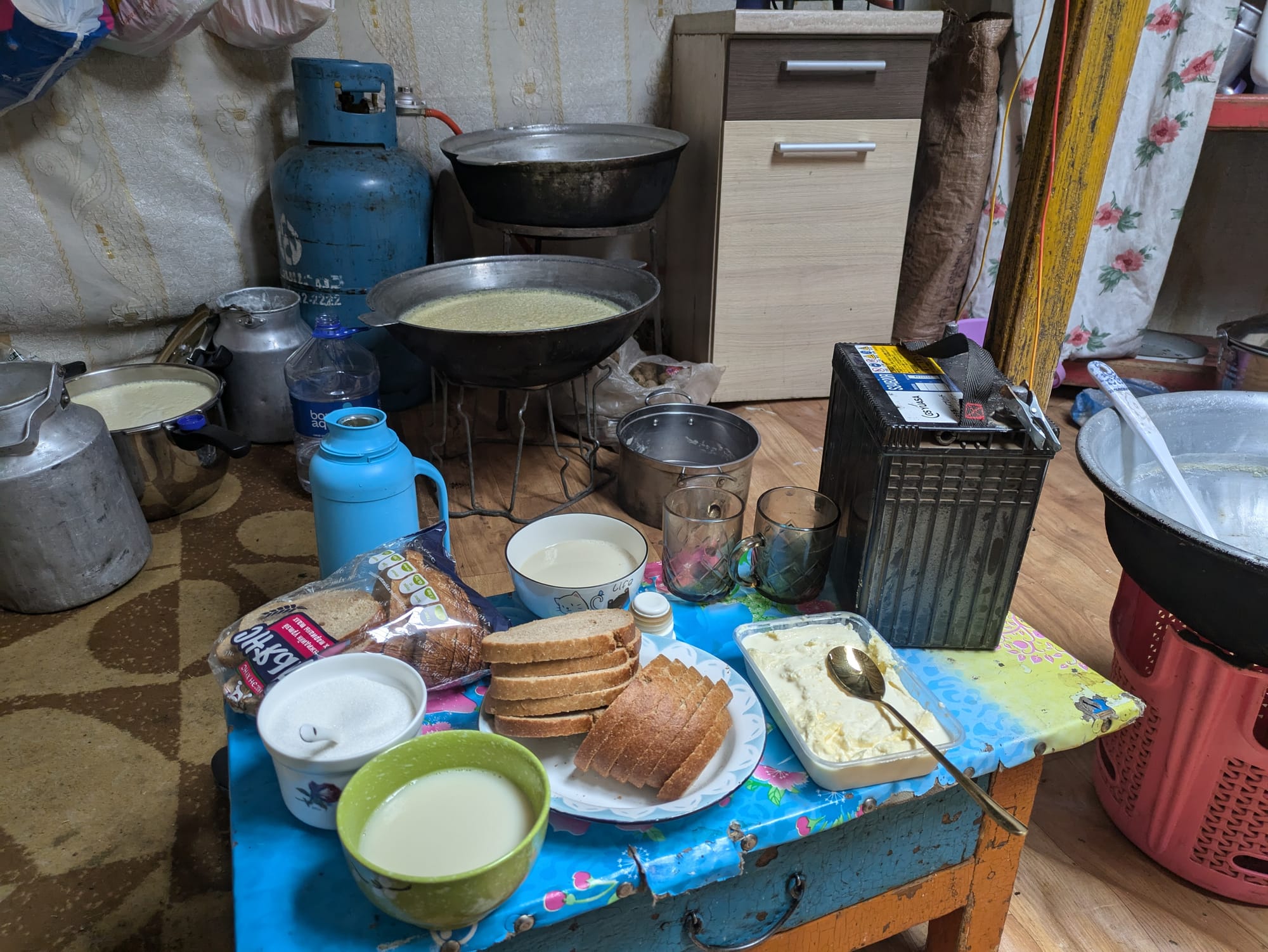
Mornings in Mongolia begin with a traditional milk tea. Made from cow's milk, this tea has a much stronger flavor than store-bought milk. My honest first impression was, “What kind of milk is this?” It’s a warm, salty drink that’s perfect for the chilly mornings on the steppe. Breakfast consisted of milk tea paired with sliced store-bought bread, spread with homemade butter called "urum." Sometimes, they even sprinkled sugar on top. Occasionally, "boortsog," a type of fried bread, was also served with the meal.
Lunch and Dinner
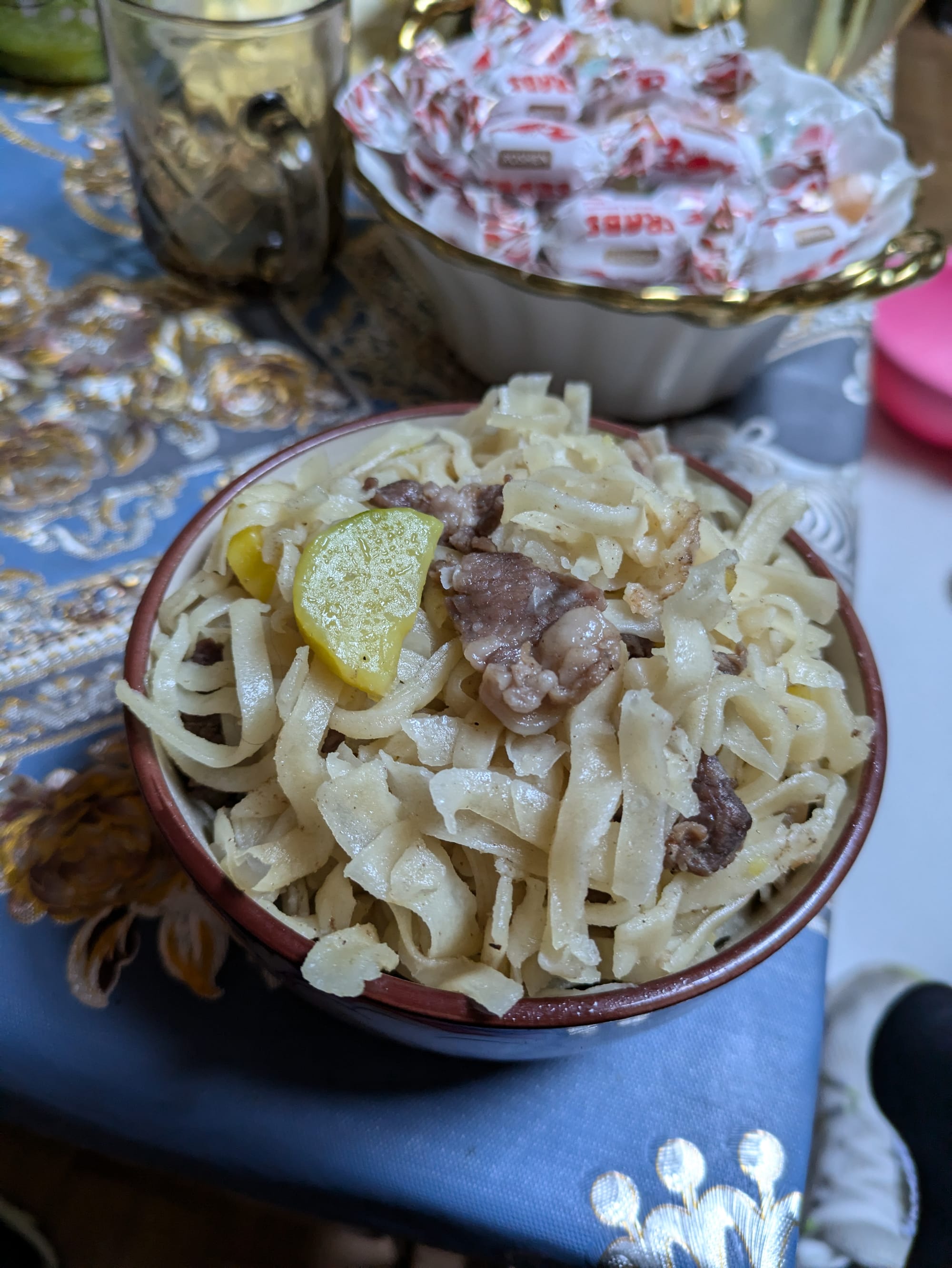
Meals were centered around lamb, wheat, and potatoes. During the five days I stayed with the family, the only vegetables I encountered were potatoes and onions. The limited variety of vegetables reflects the harsh natural environment of Mongolia.
Life in the Ger and Amenities
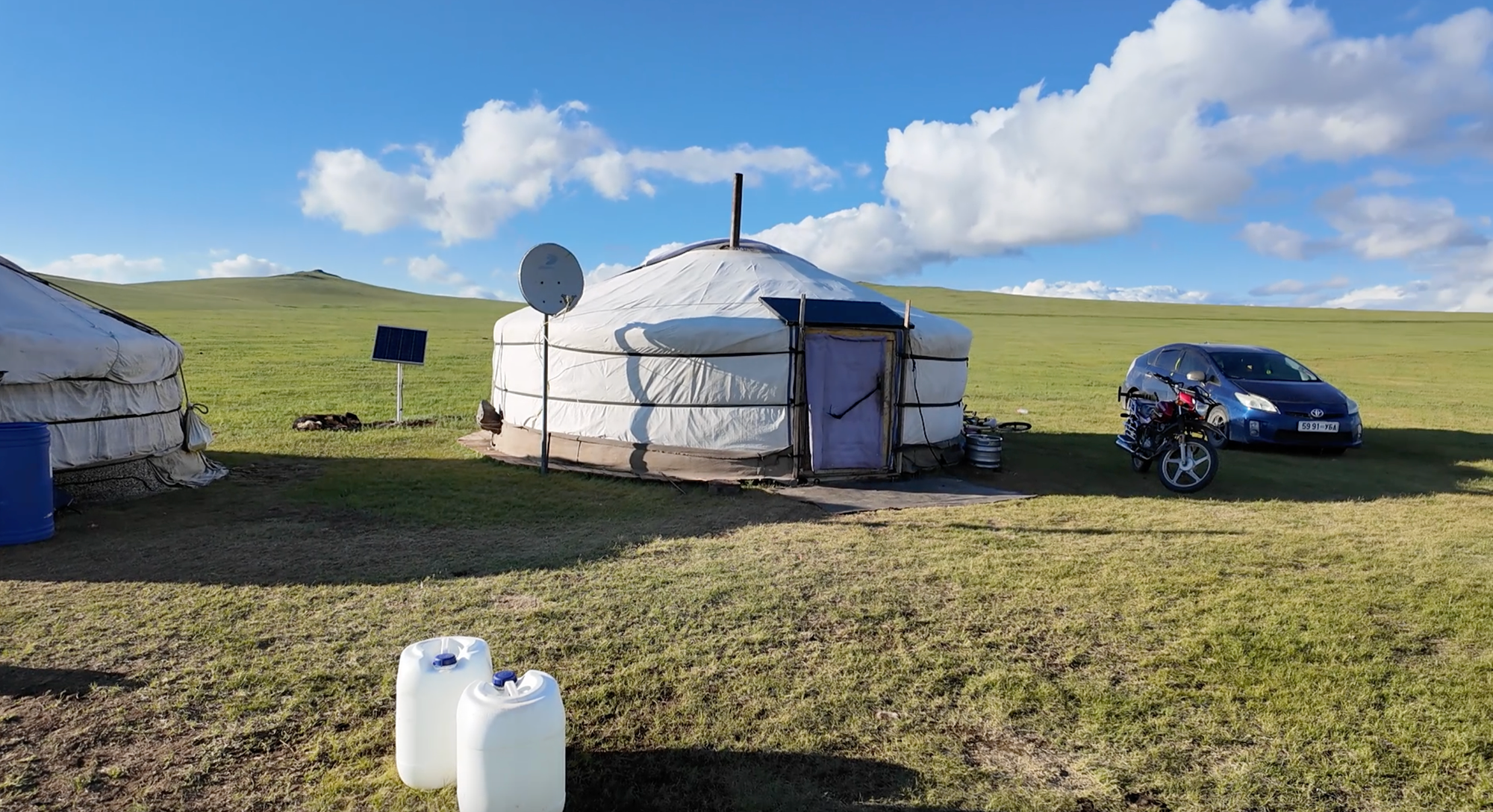
I stayed in a traditional Mongolian home called a "ger." This round, portable dwelling is constructed with a wooden frame wrapped in fabric, likely sheep’s wool. A stove in the center serves as the main source of heat, crucial for fending off the cold. The ger is ingeniously designed for easy assembly and disassembly, making it ideal for the nomadic lifestyle.

When it’s time to move, the ger is taken apart and transported to a new location over two days using two vehicles and all their cattle. As winter approaches, they relocate to a more hospitable area and set up their ger again.
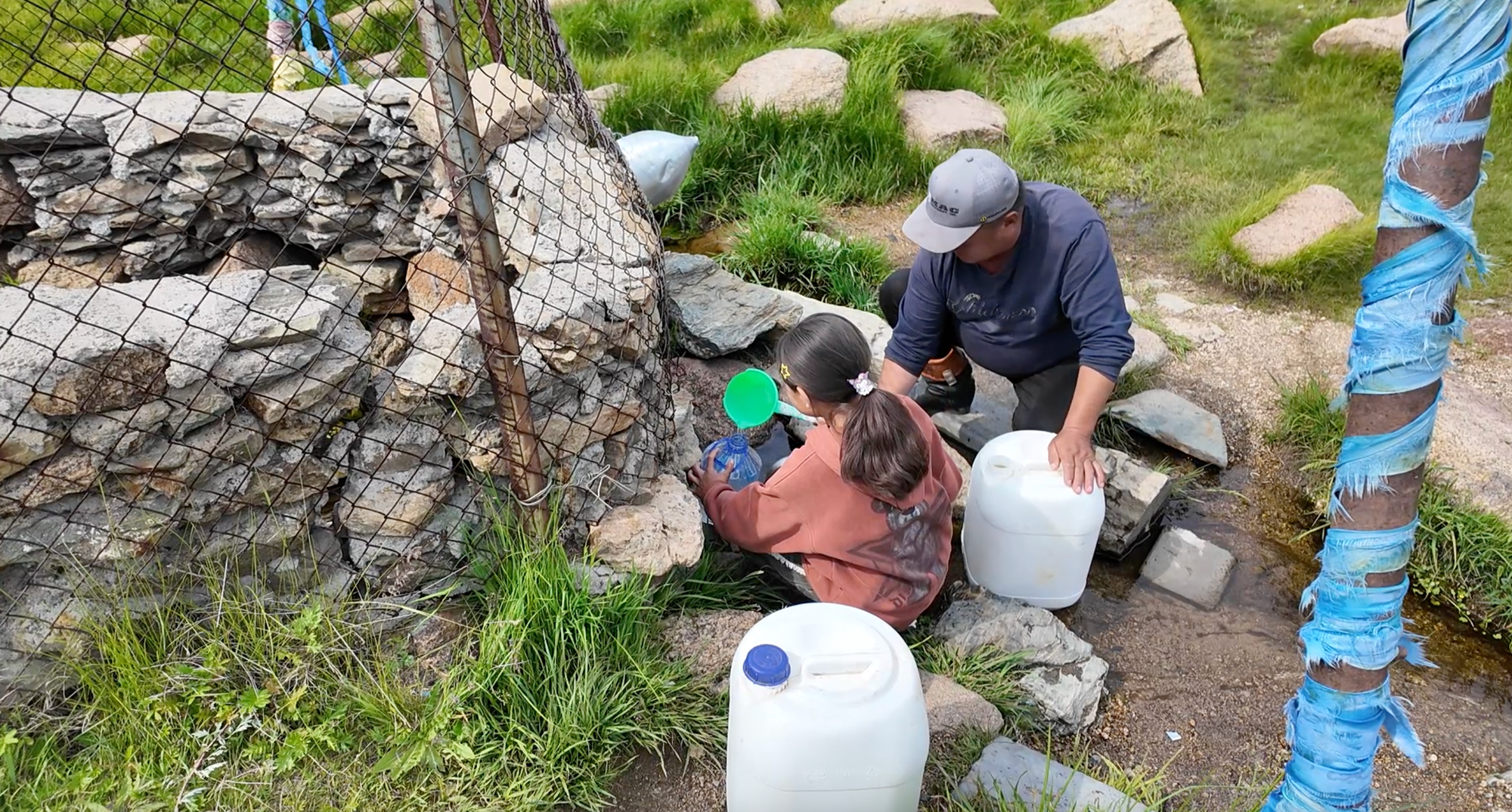
With limited access to water, I didn’t shower for the entire five days of my stay. However, I didn’t sweat much, so there was no noticeable odor or discomfort. Water was fetched from a spring about 20 minutes away by car. While the family used this water for drinking, I brought bottled water from Ulaanbaatar. I estimated I’d need four 4.5-liter bottles for the five-day stay.
Traditional Sheep Shearing
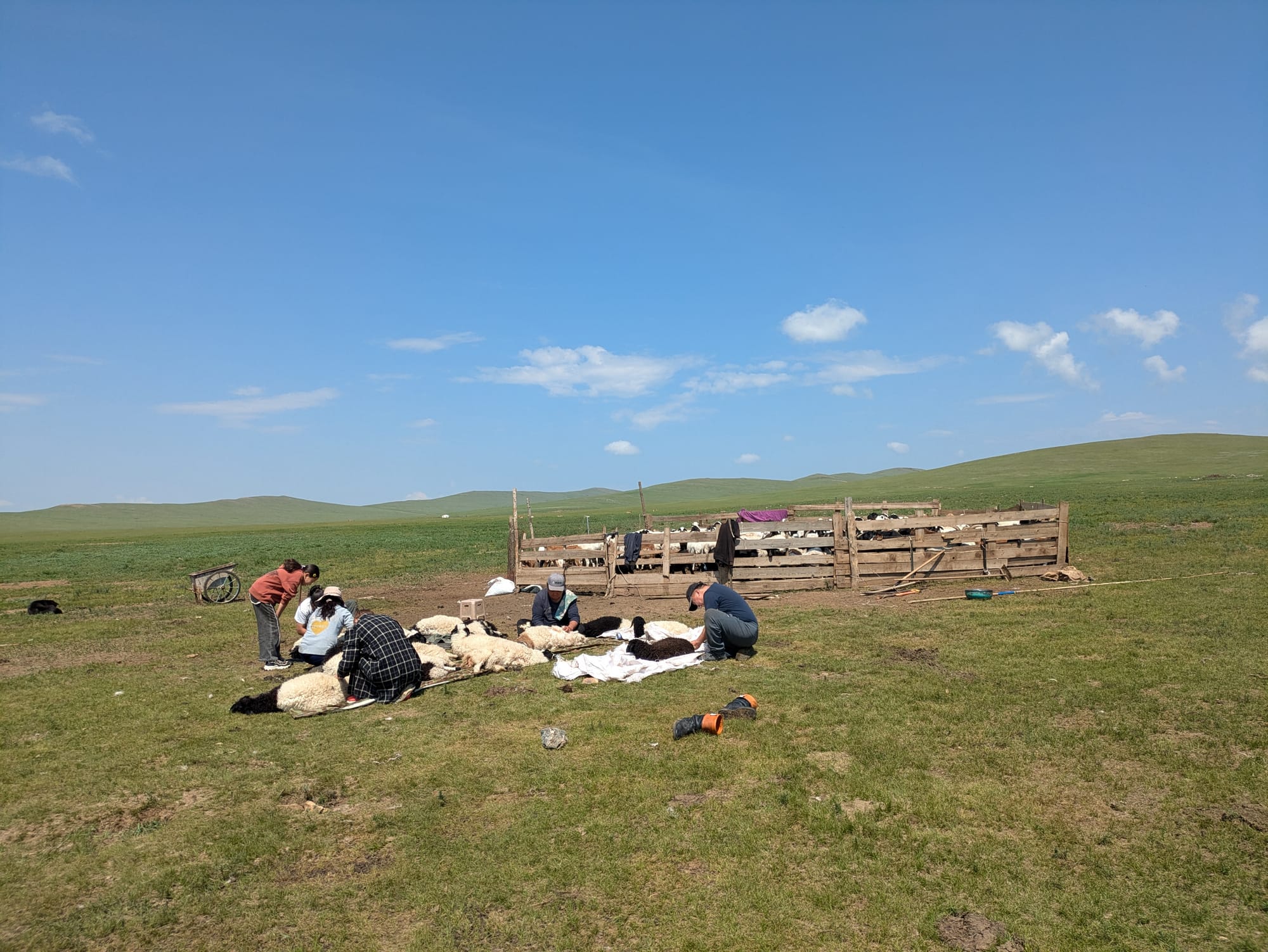
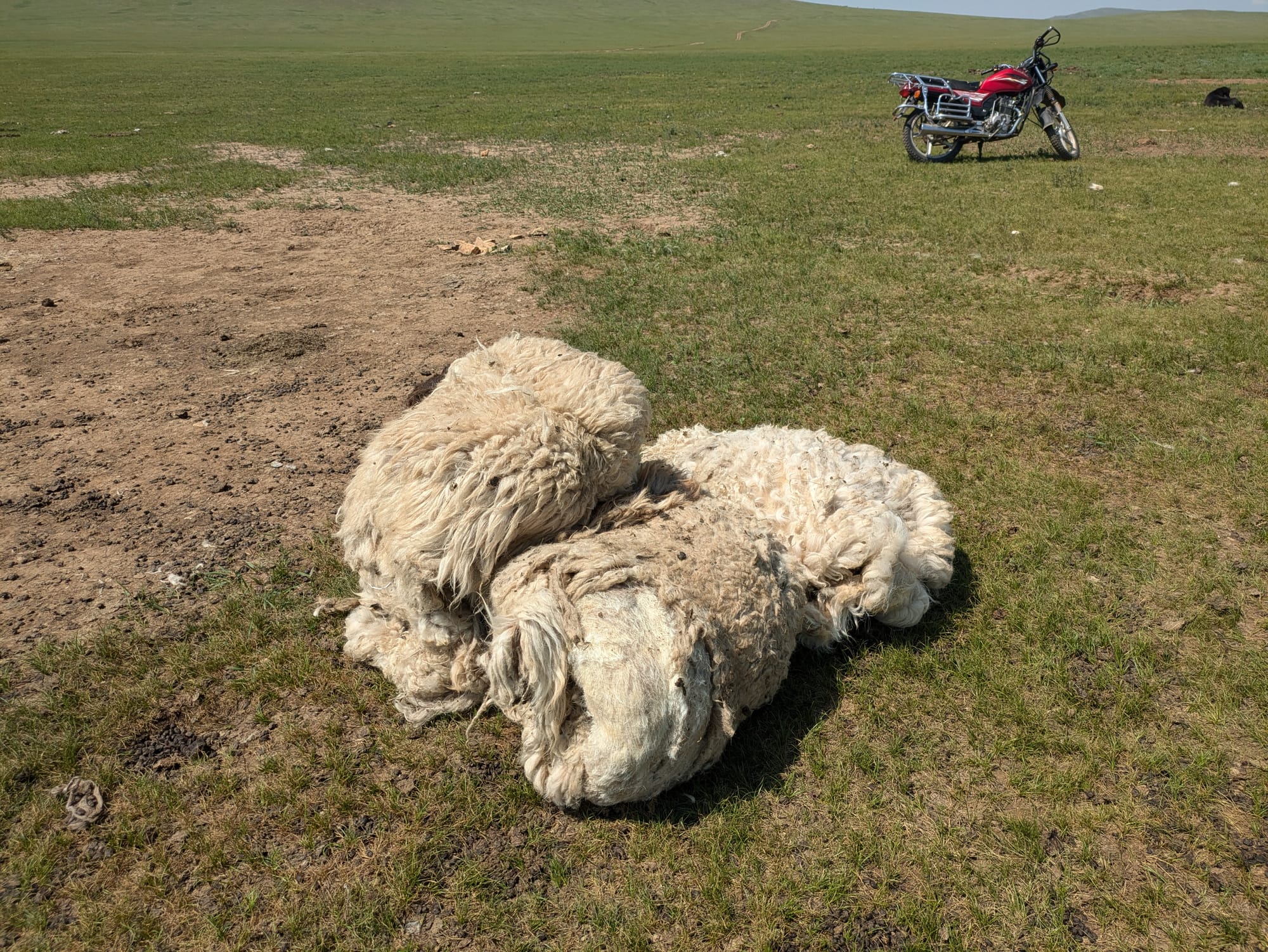
As part of the nomadic lifestyle, I participated in sheep shearing. The wool fetched around 30 cents per kilogram. Instead of using electric clippers, the family carefully sheared the wool with scissors. This physically demanding task was a family effort, with even relatives from the city joining in to help.
Khorkhog: A Traditional Mongolian Dish
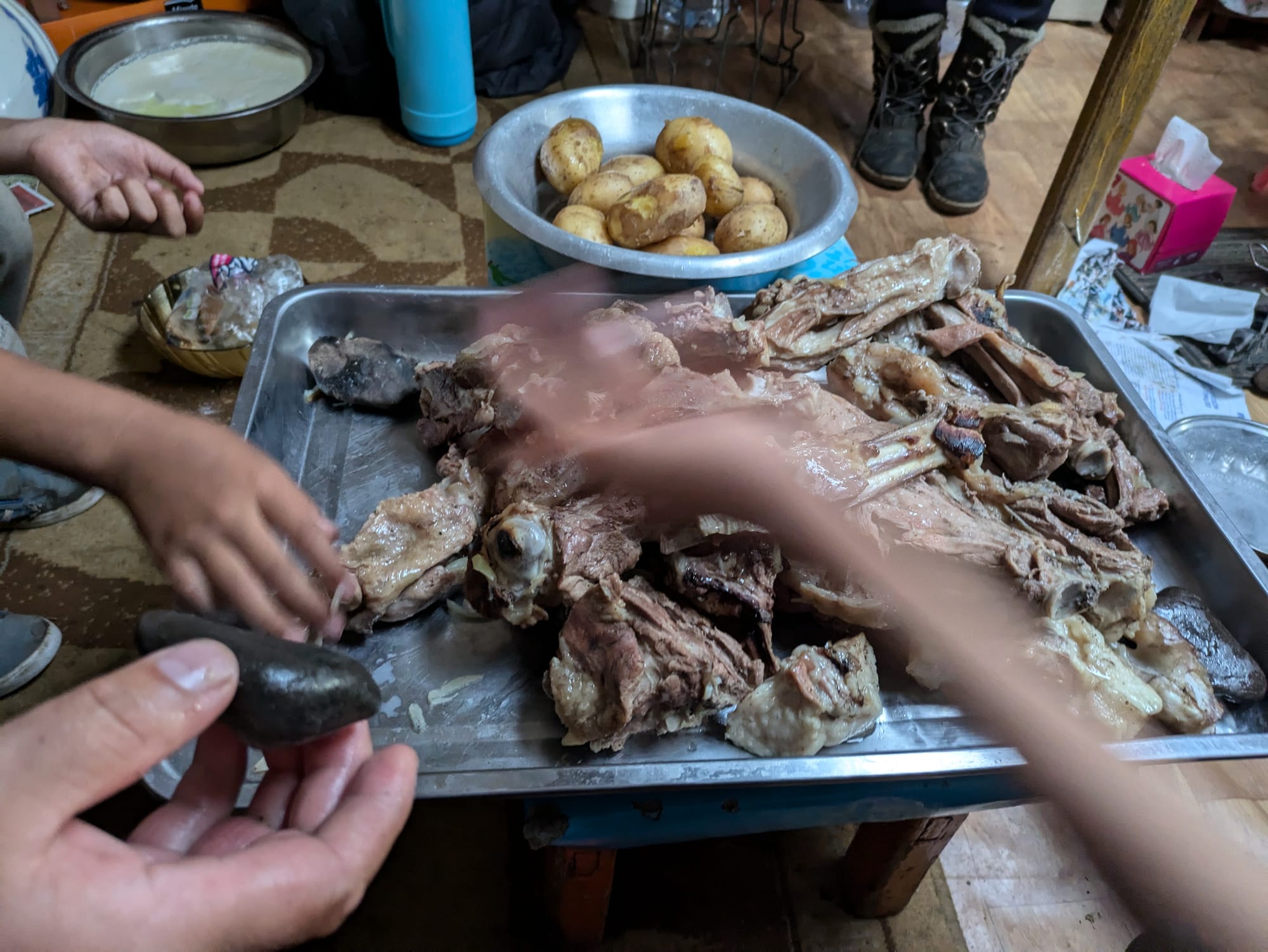
One of the highlights of the meals was "khorkhog," a traditional Mongolian dish. Khorkhog is made by steaming lamb with heated stones in a pot, giving it a distinctive flavor. The rich taste of the lamb, infused with the essence of the stones, was a memorable experience closely tied to the nomadic lifestyle. We gathered around to share the meat, but what left the biggest impression on me was the use of the hot stones and the oil left after cooking. The family taught me, through gestures, to press the warm stones against my body to keep warm—on my shoulders, stomach, and arms. Afterward, the mother used the remaining oil from the khorkhog to give me a massage. This experience evoked mixed feelings. Although I found the smell of mutton unpleasant, I was deeply moved by the warmth and care she showed. It was a complex, emotional moment that I’ll never forget.
Coexisting with Animals
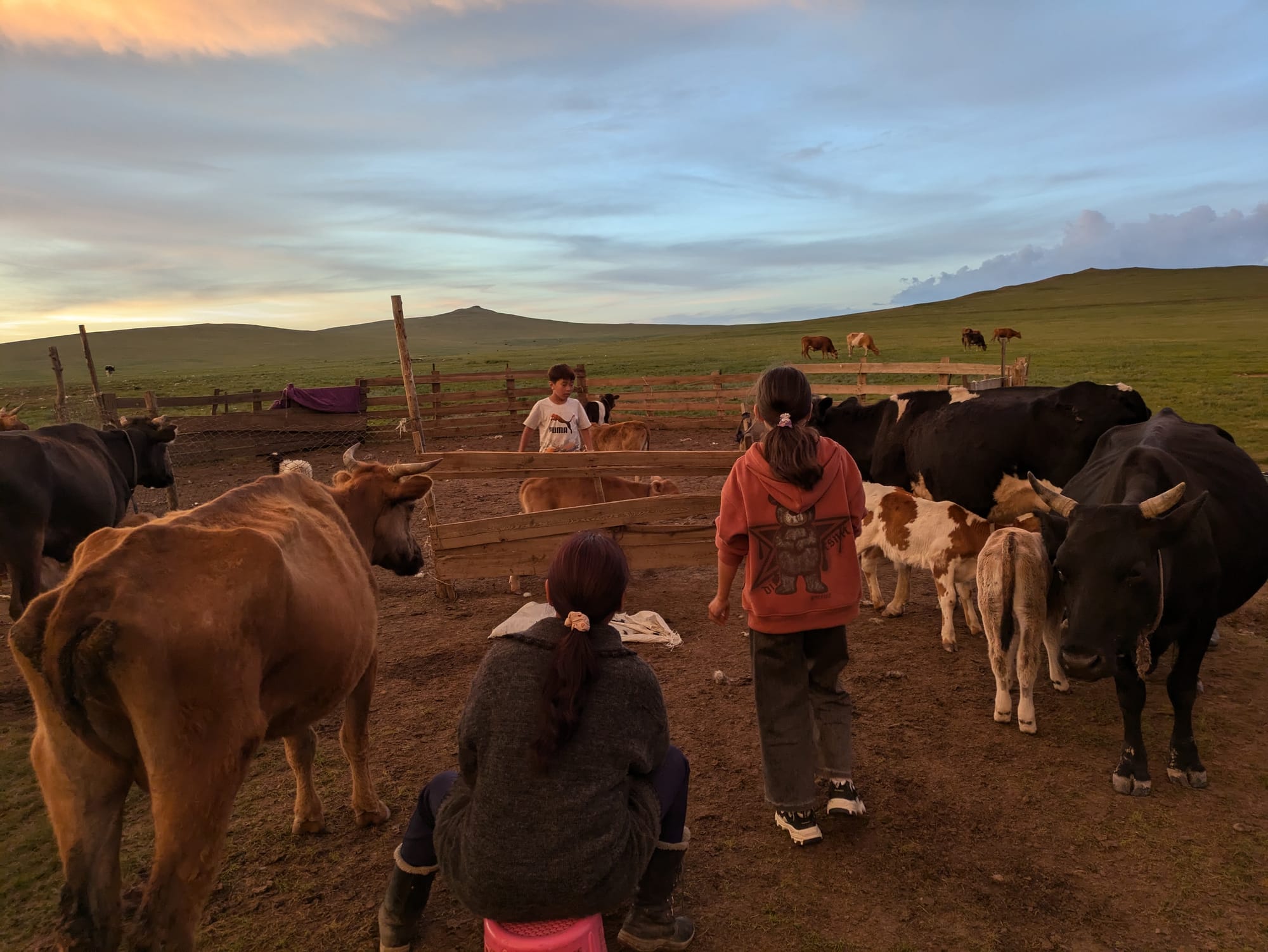
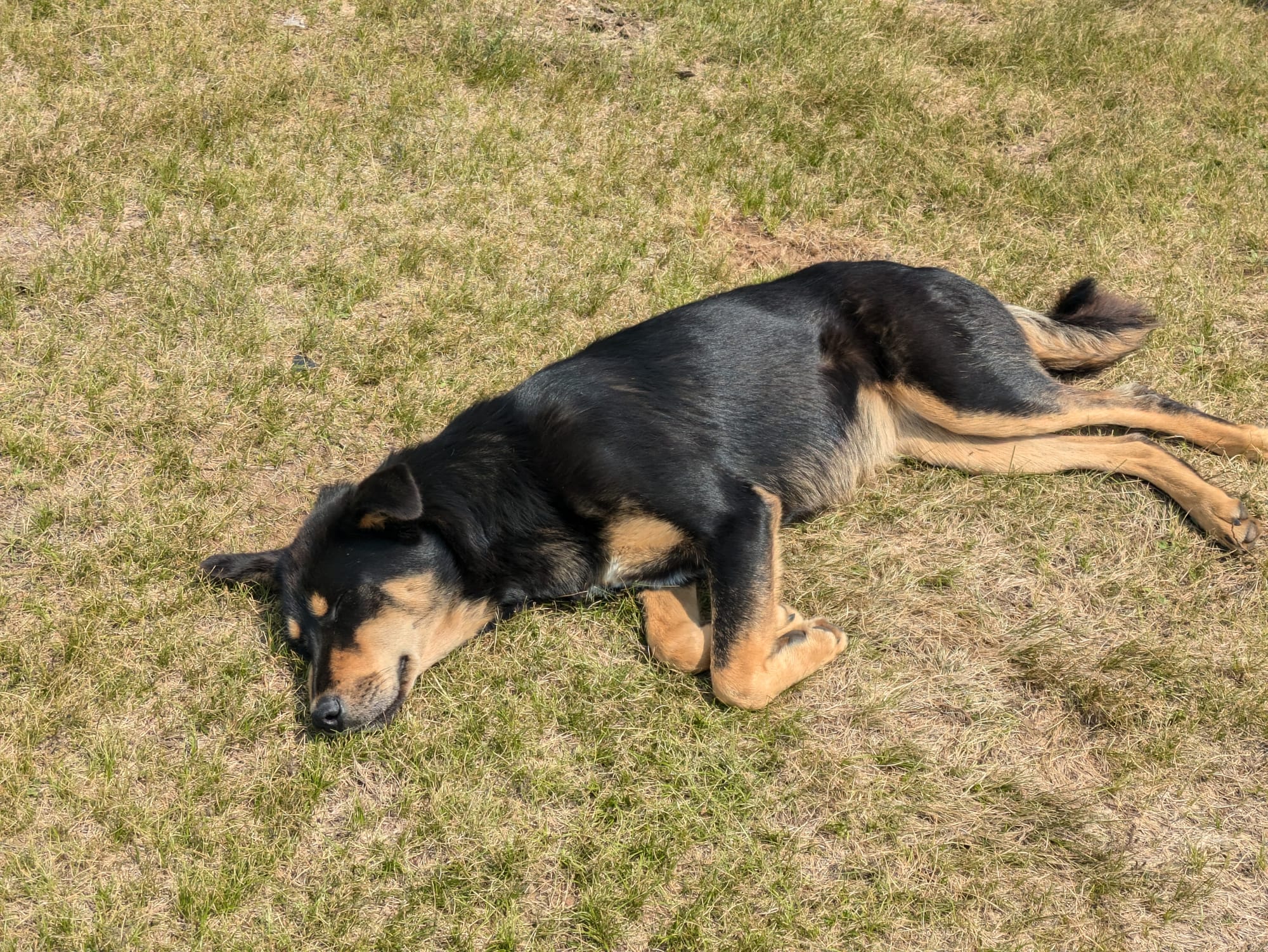
The nomadic family I stayed with had three dogs. I was warned to stay away from one of them, as it could be aggressive towards people. The other two were generally calm but would bark protectively when I approached the sheep or cattle. The steppe was dotted with animal droppings, but the scent was often masked by fragrant herbs growing nearby. Dried cow dung was also used as fuel for fires. I’m not sure if it was a joke or not, but I was told that sheep respond to a whistle.
TV and Electricity in the Ger
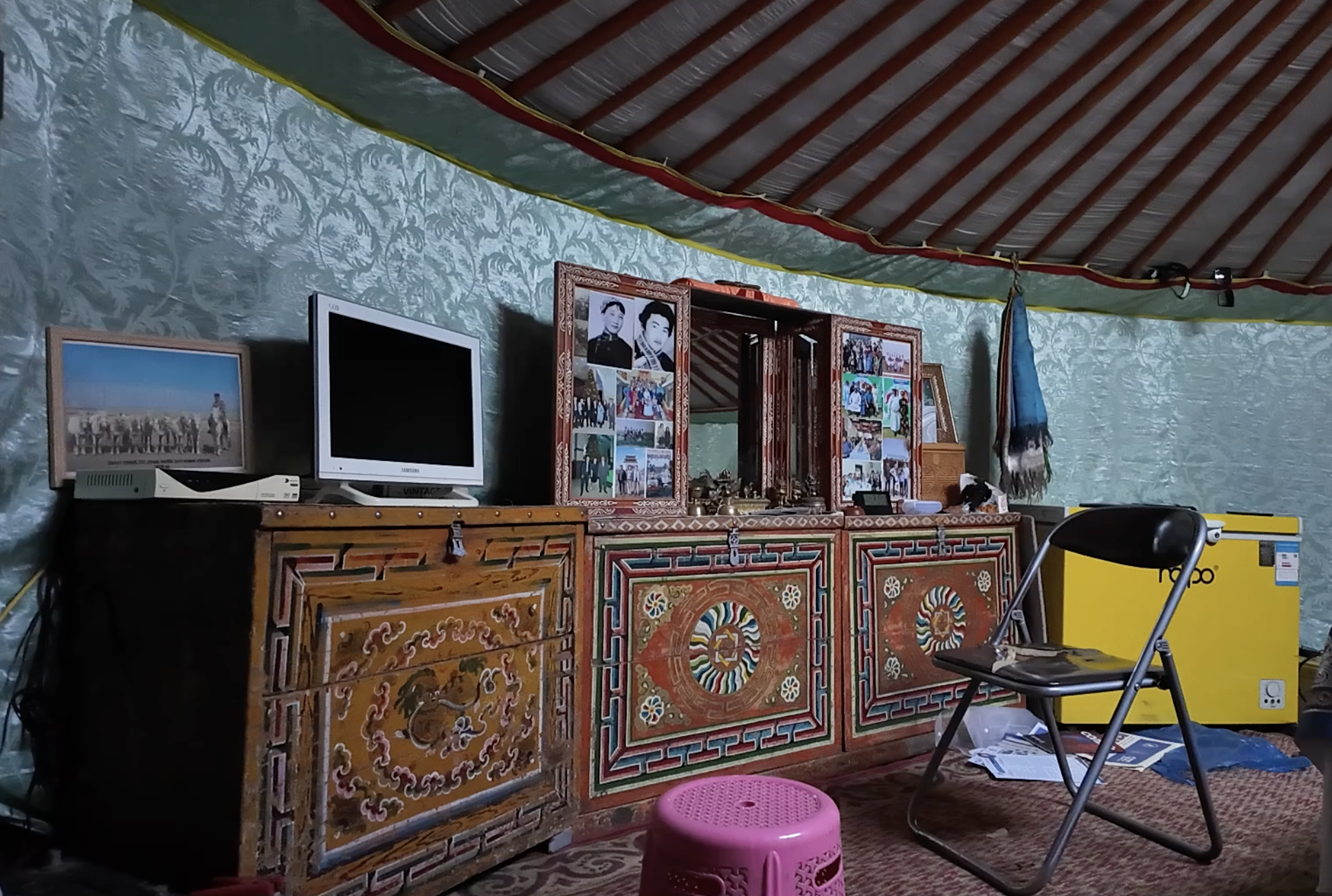
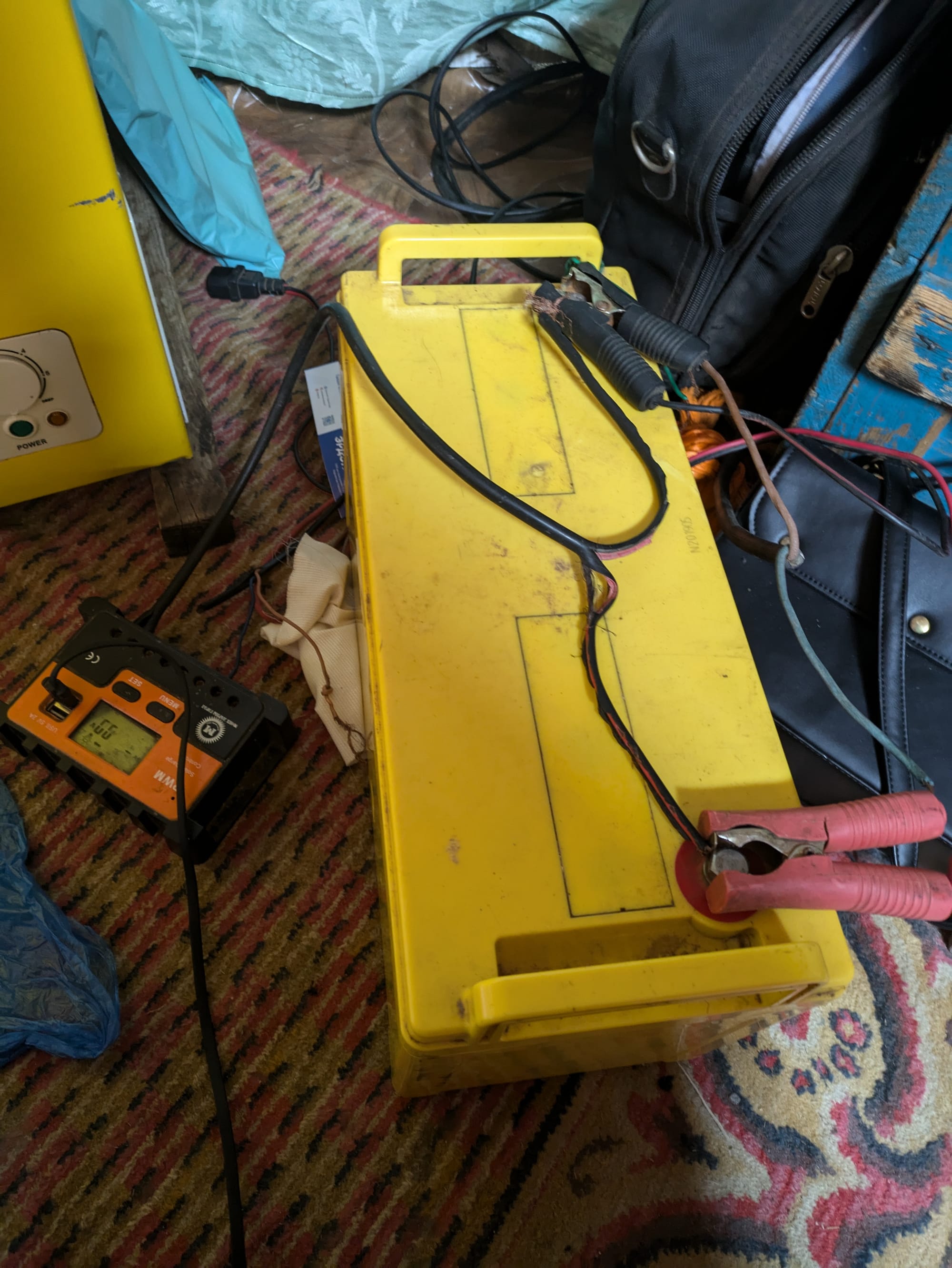
Surprisingly, the ger had a television. Equipped with an antenna, it was powered by a car battery and solar panels. The blend of tradition and modern technology was fascinating. During my stay, there was an election going on, so the father frequently watched the election updates. Occasionally, we also watched what seemed like old dramas.
Costs and Arranging the Tour
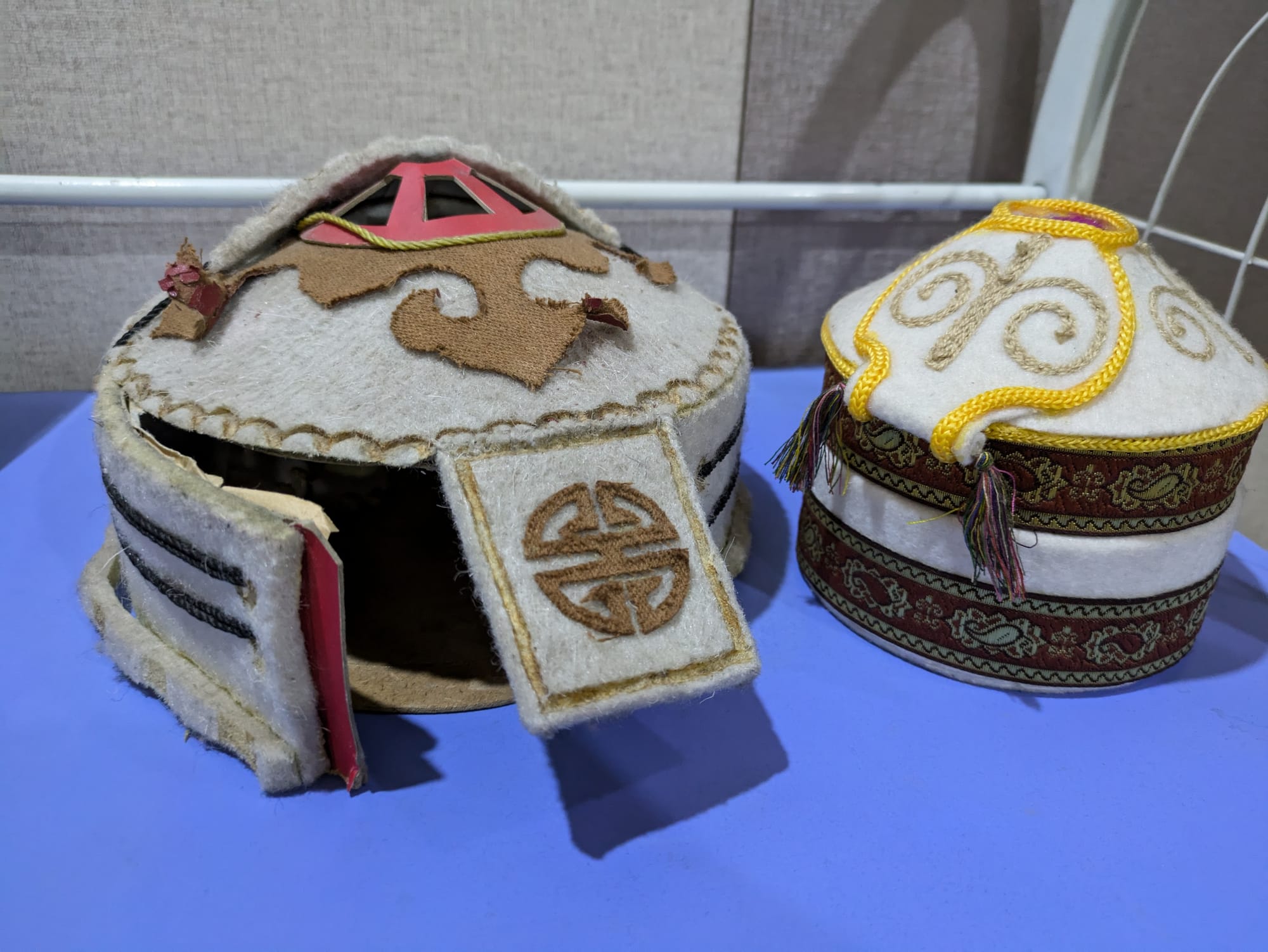
The homestay I experienced cost 5,000 yen per night for four nights. The journey from Ulaanbaatar to the nomadic family included three transfers, with each trip costing 6,000 yen, totaling 18,000 yen. In Ulaanbaatar, I stayed in a hotel with breakfast included, costing 4,000 yen per night, for a total of 8,000 yen for two nights.
Overall, the entire experience cost 46,000 yen.
Booking the Homestay
I found this homestay through a Mongolian restaurant called "Copen" in Osaka. I contacted a Mongolian who arranges tours via a flyer in the restaurant. We moved from email to LINE for more detailed communication. The arrangements were made in fluent Japanese. One thing to note is that communication might require more initiative compared to what you might expect in Japan.

ツアーオペレーター: B. トヤーバドラフ(トヤー)
TEL: +976-9904-0968
Facebook: Baast Tuyabadrakh
Email: mitsuo_0413@yahoo.com
https://tabelog.com/osaka/A2701/A270305/27056982/
Location and Climate
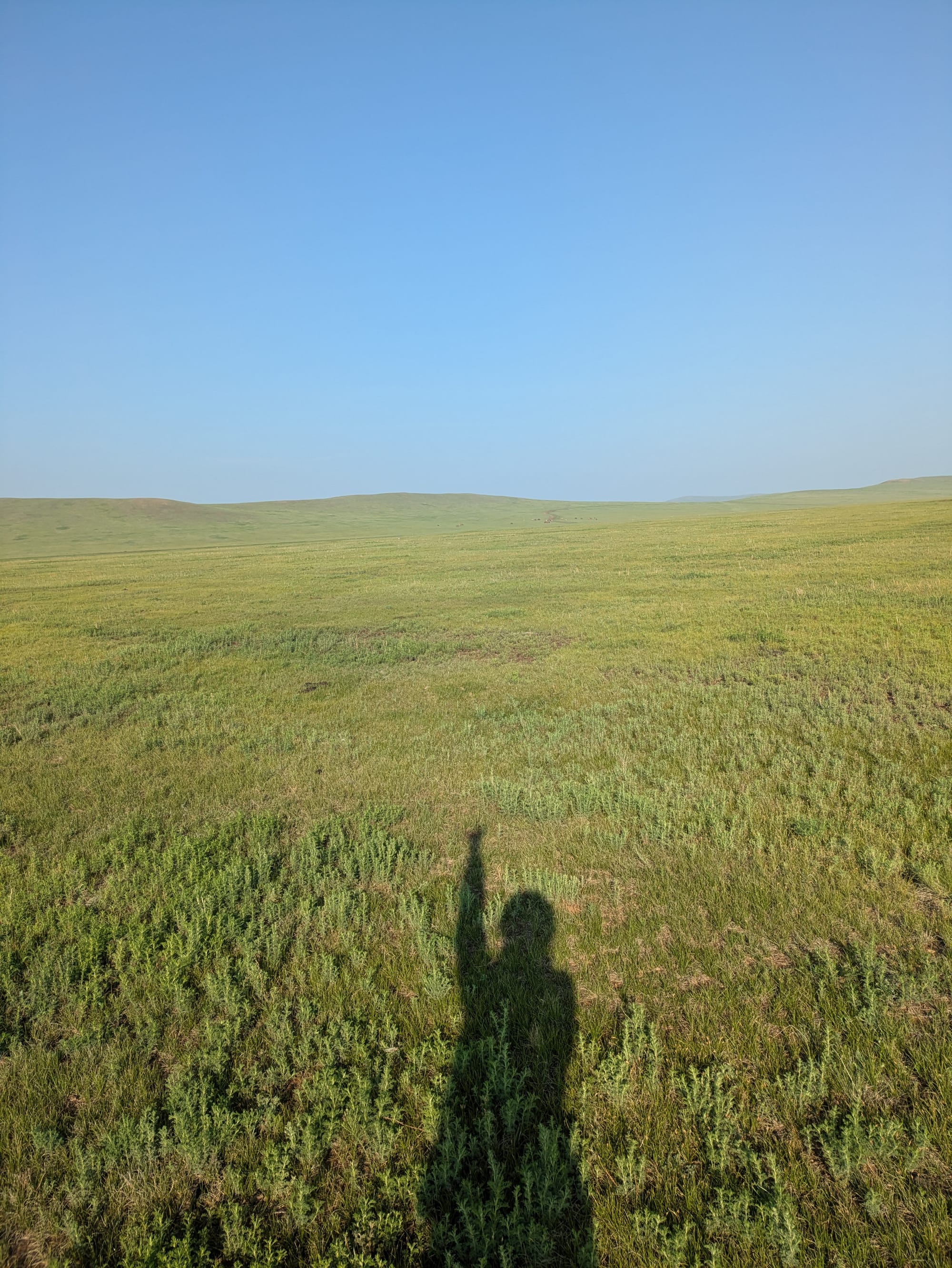
The nomadic family I visited lived about an hour to an hour and a half by car from Ulaanbaatar. Although there was no specific address, the area was characterized by vast, open grasslands. My visit took place from June 27th to July 1st, 2024, during summer. However, I was told it was slightly cooler than usual. The landscape was beautifully green.
What to Pack
This post contains Amazon affiliate links for the products I’ve used or similar items. If you click on these links and make a purchase, I may earn a small commission at no additional cost to you. Your support helps me keep this blog going, and I truly appreciate it!
Aside from basic travel essentials, here are some items that I found particularly useful:
- A foldable down jacket
- Hiking socks
- Hand towels
- Wet wipes (with and without alcohol)
- Easy-to-wear outdoor sandals
- A headlamp
- Food items (like instant rice and miso soup)
- Snacks to share (such as assorted candies, Jagabee, or Jagariko snacks)
Personal Reflections and Insights
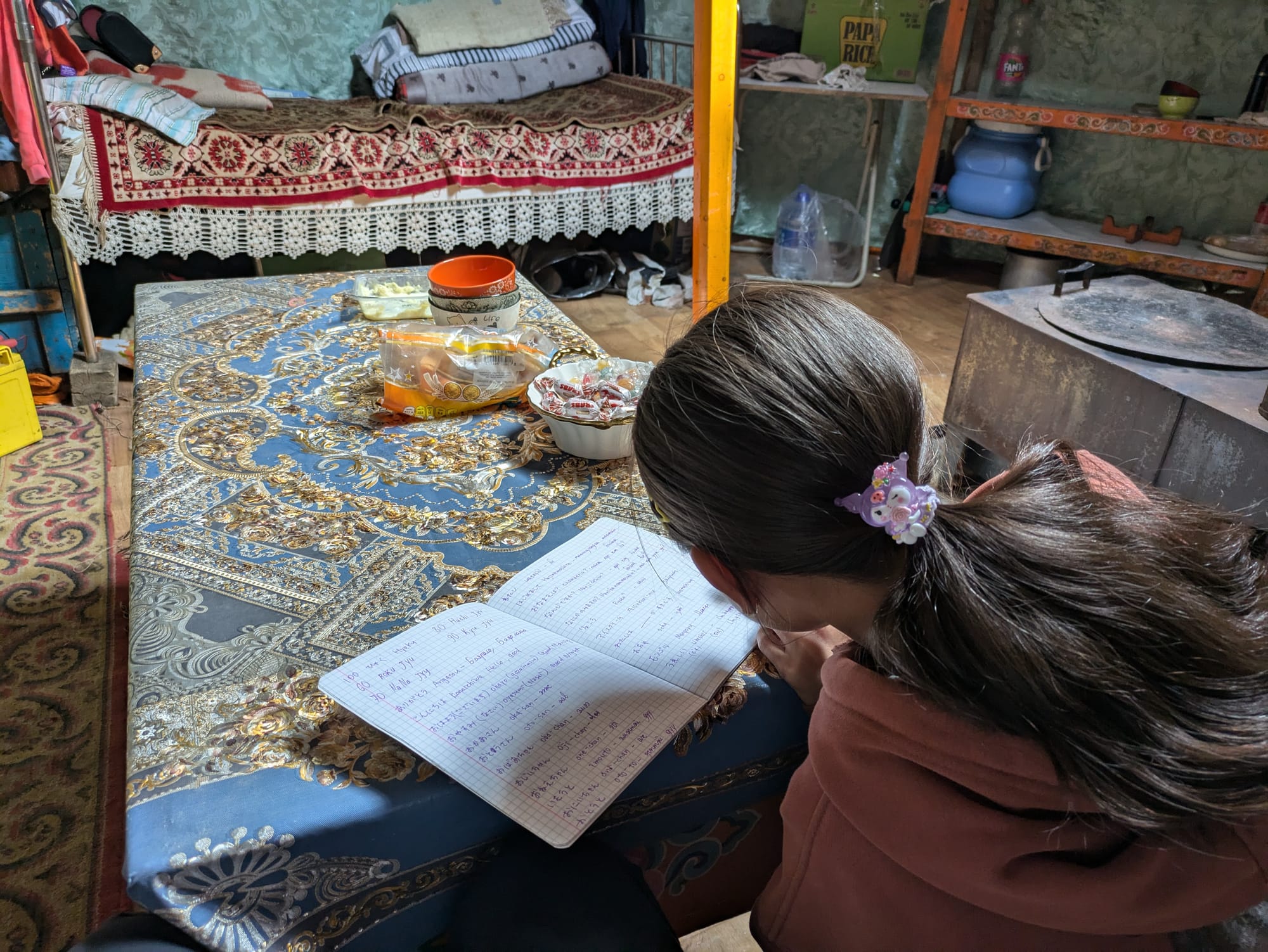
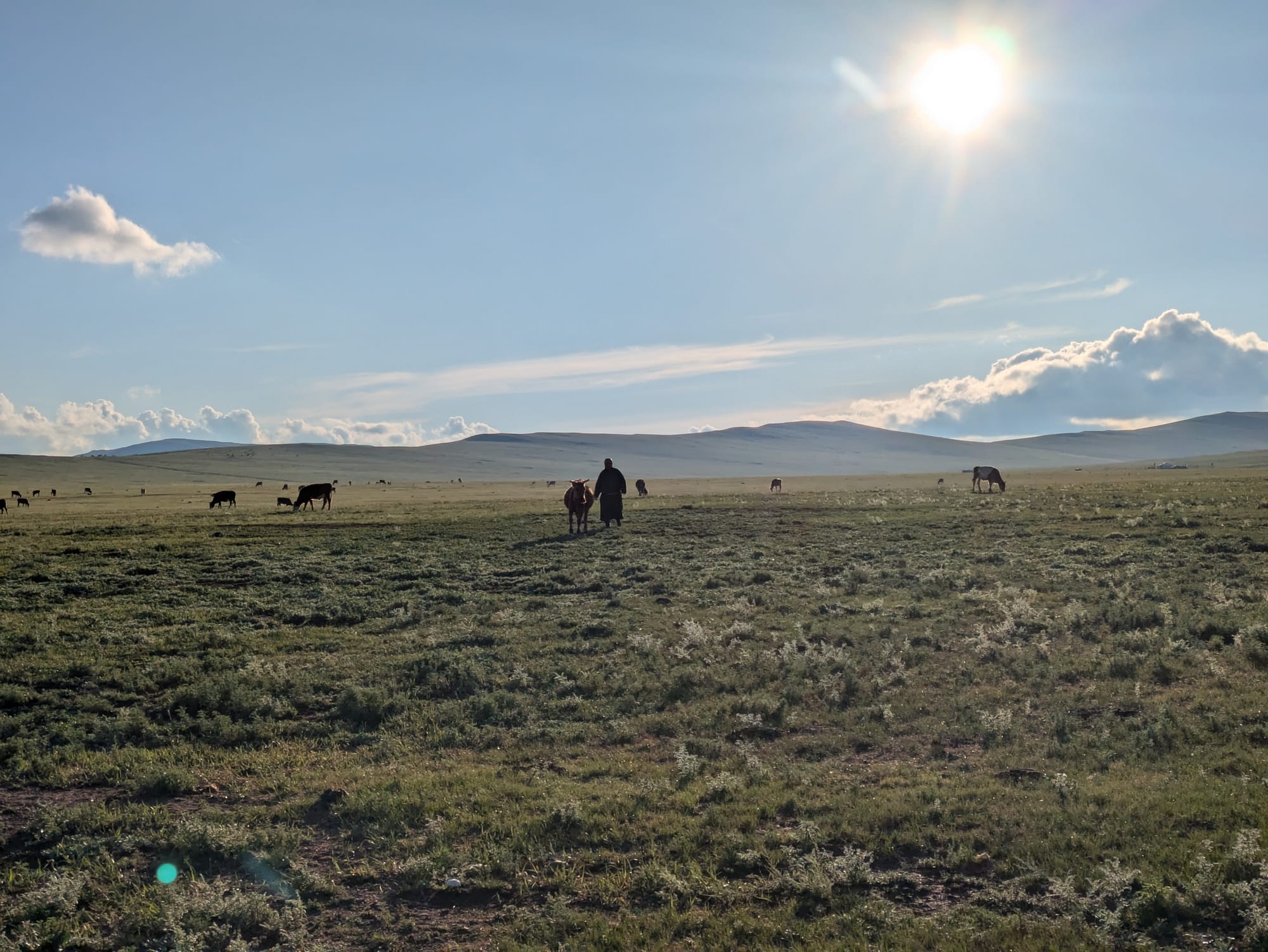
- Despite brushing their teeth infrequently, I was impressed by the clean, well-aligned teeth of the people I met.
- The partnership between husband and wife in the family was inspiring—a strong life partnership that might be hard to find in today's world with so many choices.
- I can’t help but think that in 20 years, there may be no nomadic families left, except for those catering to tourists.
Japanese/日本語
2024年の6月下旬にモンゴルで遊牧民家族と過ごしました。今回は、遊牧民の1日がどんな風に過ごされているのか、そして私が体験したことをご紹介します。
1日の始まり:乳茶と朝ごはん
朝は、モンゴルの伝統的な乳茶で始まります。乳茶は牛のミルクだそうですが、市販されている牛乳よりも匂いが強くて、個人的には「何のミルクだろう?」というのが正直な感想です。塩味が効いた温かい飲み物で、寒い草原での朝にぴったりです。朝食は乳茶にスライスされた市販のパン、それにウルムと呼ばれる自家製バターをつけて食べます。その上から砂糖を振っている時もありました。またパンと一緒に市販のボールツォグ(Boortsog)、揚げパンのようなものが食卓に並ぶことがありました。
昼ごはんと晩ごはん
ラム肉や小麦、そしてじゃがいもが中心。私が滞在した5日間で食べた野菜は、じゃがいもと玉ねぎだけでした。野菜の種類が少ないのも、モンゴルの厳しい自然環境の影響を感じさせます。
ゲルでの生活と設備
滞在中は、伝統的なモンゴルの住居「ゲル」に泊まりました。ゲルは、丸い形をした移動式の住居で、木のフレームに布や(おそらく羊の毛)が巻きつけられて作られています。中央には暖炉があり、寒さを防ぐための暖房として機能します。ゲルの構造は非常に合理的で、解体と再組み立てが簡単にできるようになっています。
遊牧民が移動する際、ゲルは分解され、二日かけて二台の車と全ての牛を使って新しい場所に運ばれるそうです。冬が近づくと、より過ごしやすい場所を求めて移動して、そこで再びゲルを組み立てて生活を続けます。
水が限られているため、滞在中の5日間はシャワーを浴びることはありませんでした。しかし汗をかくことがなかったので匂いや痒みもなく、特に困ることはありませんでした。水はゲルから車で20分ほど離れた場所にある湧水から調達していました。現地の家族はその水を飲料水として使用していましたが、私はウランバートル(首都)からミネラルウォーターを持参しました。多めに見積もって5日間で4.5Lのペットボトルを4本持って行きました。
伝統的な羊の毛刈り
遊牧民の生活の一環として、羊の毛刈りを体験しました。1キロあたり0.3米ドル(約30セント)だそうです。電気シェーバーではなく、ハサミで丁寧に刈り取ります。毛刈りは力仕事で、家族全員が協力して行います。都市に住んでいる家族や親戚も総出で刈り取ります。
ホルホグ:モンゴルの伝統料理
食事の時間には、モンゴルの伝統料理「ホルホグ」をいただきました。ホルホグは、石で加熱された羊肉を鍋で蒸し焼きにした料理で、独特の風味があります。羊肉の旨みが凝縮され、口に広がる味わいは、遊牧民の生活と密接に結びついた料理です。みんなで肉を囲って食べました。一番印象的だったのはホルホグで使用する焼石とそのあとに出た油です。温かい焼石を体に当てて体を温めます。肩やお腹や腕に当てるようにジェスチャーで教えてくれました。最後にそのホルホグを調理した後に出た油でお母さんがマッサージしてくれました。これはかなり複雑な気持ちでした。私は羊の匂いが苦手なのでその油をこめかみや手や腕に塗ってマッサージされること自体は大変不快なのですが、人との触れ合い、お母さんの心の温かさに感動して泣きそうになりました。この複雑な気持ちの体験は一生記憶に残ると思います。
動物との共存
遊牧民の家族には犬が3匹いて、そのうち1匹は人間にも噛みつく可能性があるため、あまり近づかないように言われました。他の2匹は普段はおとなしいですが、羊や牛などの動物に近づこうとすると警戒して吠えてきます。草原には動物のフンが多いですが、それをかき消すようないい香りのハーブが生えていました。乾燥した牛のフンは、火を起こすための燃料としても利用されるそうです。これは冗談か本当か分かりませんが、羊は指笛で呼ぶそうです。
テレビと電力事情
ゲルの中には、なんとテレビがありました。アンテナもあり、電源は車のバッテリーとソーラーパネルで供給されています。伝統と現代の技術が共存する様子がとても印象的でした。私が滞在していた時に選挙があったので、お父さんはよく選挙速報を見ていました。昔のドラマのようなものも時々見ていました。
費用とツアーのアレンジ
私が体験したこのホームステイは、4泊で1泊あたり5,000円。ウランバートルから遊牧民の家族のもとへは、空港からホテルへの送迎を含めて、計3回の送迎があり、1回6,000円の計18,000円でした。ウランバートルでの滞在は、1泊4,000円で朝食付きのホテルに宿泊しました。2泊で8,000円です。
合計46,000円でした。
ホームステイの予約方法
このホームステイは、大阪にあるモンゴル料理店「コペン」で見つけました。店内にあったチラシを通じて、モンゴル人でツアーを斡旋してしている方に連絡を取り、メールからLINEでのやり取りに移行しました。流暢な日本語で旅のアレンジをしてくれました。注意点としては、日本のサービスとは異なる点があり、自分から積極的にコミュニケーションを取ることが大切です。
ツアーオペレーター: B. トヤーバドラフ(トヤー)
TEL: +976-9904-0968
Facebook: Baast Tuyabadrakh
Email: mitsuo_0413@yahoo.com
アクセスと気候
私が訪れた遊牧民の家族は、ウランバートルから車で約1時間から1時間半の場所にありました。住所はなく、詳細な場所はわかりませんが、広大な草原が広がるエリアです。私が訪れたのは2024年の6月27日から7月1日までで、夏でしたが例年よりすこし涼しいと聞きました。緑が広がる美しい景色が広がっていました。
持ち物
基本の旅行の持ち物の他に持っていってよかったものを紹介します。
注意:紹介している商品や類似品にはアマゾンのアフィリエイトリンクが含まれています。これらのリンクをクリックして商品を購入していただくと、私に少しの手数料が支払われることになりますが、皆さんの購入価格には影響ありません。サポートありがとうございます!
- 薄いダウンジャケット
- 登山用の靴下
- タオルハンカチ
- ウエットティッシュ・アルコール、アルコールなし
- 脱ぎ履きしやすいアウトドアサンダル
- ヘッドライト
- 食料品(アルファ米やインスタント味噌汁)
- シェアする用のお菓子(いろんな種類が入った飴やジャガビーやじゃがりこなどのスナック菓子)
個人的な感想や学び
- あまり歯磨きをしない印象にも関わらず歯並び、色がきれい
- 夫婦のチームプレイ・ライフパートナーが眩しかった。選択肢が多すぎる現代人には難しいだろうな。
- もう20年後には観光用以外の遊牧民は居なくなると思った。
